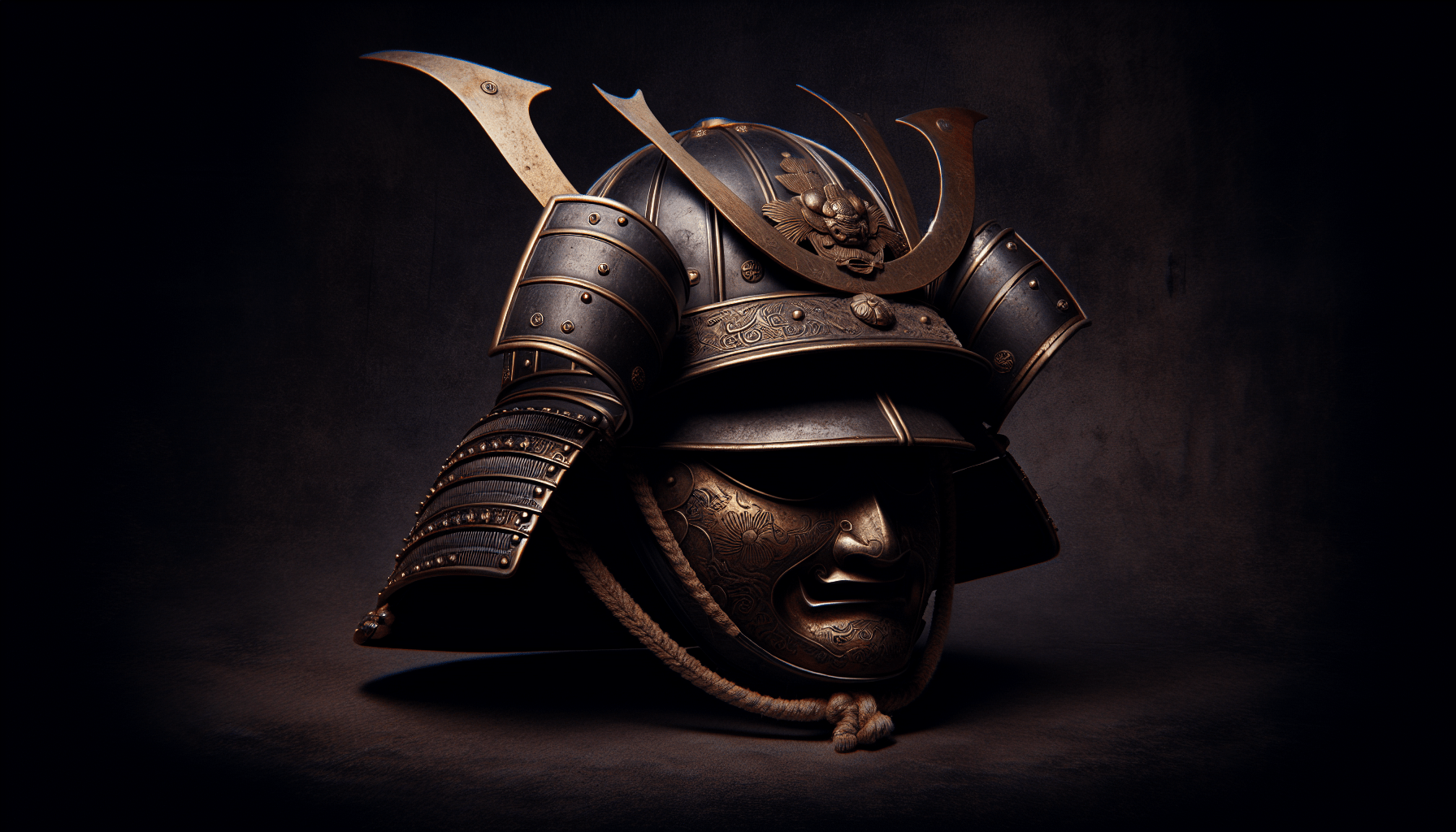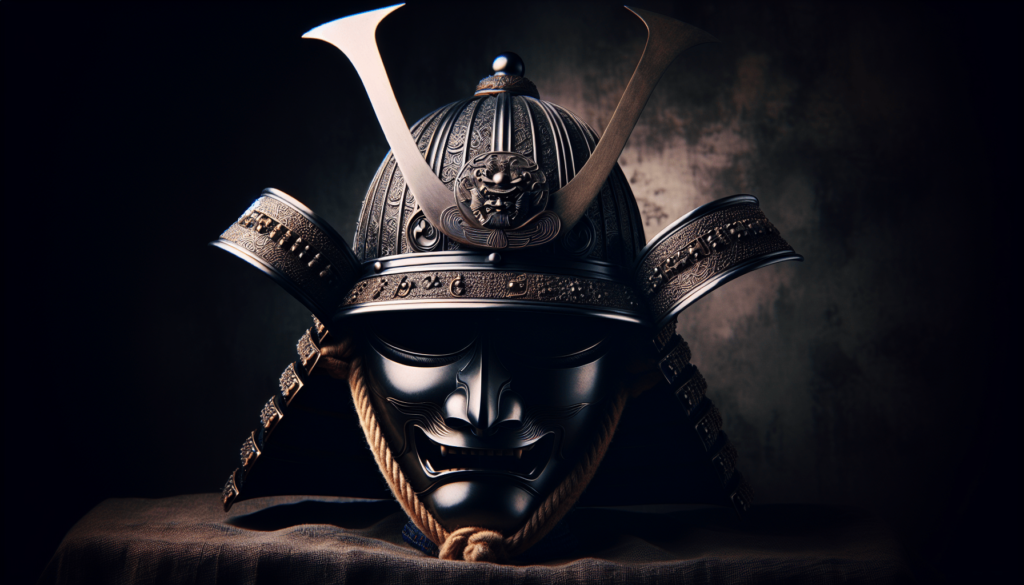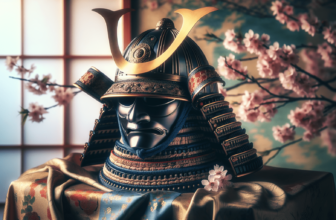
What comes to your mind when you think about samurai helmets? Do you envision fierce warriors adorned in intricate headgear, ready to defend their honor? In popular culture, samurai helmets have captured our imagination, but how accurate are these depictions compared to historical reality? Let’s take a closer look at the fascinating world of samurai helmets and their representation in movies, video games, and other forms of media.
The Significance of Samurai Helmets
Samurai helmets, known as “kabuto,” are not just mere accessories. They hold historical importance and symbolize the status, power, and identity of samurai warriors. Each kabuto was uniquely designed, reflecting the individual’s characteristics or clan affiliation. Understanding the significance of these helmets gives you a better context to evaluate their portrayals in popular culture.
The Craftsmanship Behind Kabuto
The intricate craftsmanship involved in creating kabuto is nothing short of impressive. Skilled artisans used materials like iron, leather, and lacquer to produce these helmets. Traditional kabuto often featured elaborate designs, including crests that represented the samurai’s clan or family.
Furthermore, the craftsmanship included both protective and decorative elements. While some kabuto were designed purely for battle, others served as ceremonial pieces. This duality is often lost in modern representations, where the aesthetic often overshadows the functionality.
Historical Accuracy in Pop Culture
When it comes to historical accuracy, many representations of samurai helmets in pop culture fall short. Big-budget films, animated series, and video games often take creative liberties that overlook the nuances of historical designs. Some frames may look stunning, but they may not always hold true to the samurai tradition.
Notable Examples of Samurai Helmets in Movies
Movies have long been a source of fascination regarding samurai culture. However, accurate portrayals can vary significantly from one film to another.
“The Last Samurai”
In “The Last Samurai,” you see well-crafted kabuto that closely resemble traditional designs. Attention to detail is evident in the materials used and the overall aesthetic. However, the film also embellishes certain features for dramatic effect.
“47 Ronin”
On the other hand, “47 Ronin” presents a more fantastical interpretation of samurai helmets. While it is visually captivating, many helmets deviate from the practicality and historical accuracy you would expect from actual kabuto.
Video Games and Their Artistic Liberties
Video games often prioritize creativity over strict accuracy, resulting in unique samurai helmet designs that might not have historical grounding. For instance, in games like “Ghost of Tsushima,” you encounter a range of kabuto that blend reality with artistic imagination.
While these designs may be visually stunning and capture the essence of samurai culture, they often take liberties that can mislead you regarding authentic historical details.

The Evolution of Samurai Helmets Over Time
Samurai helmets have evolved over centuries, influenced by societal changes and technological advancements. Understanding this evolution helps clarify why modern depictions vary so widely.
Early Samurai Helmets
In the early periods of samurai history, kabuto were relatively simple, focusing primarily on function. Basic designs offered protection during battles without elaborate ornamentation. As time progressed, helmets became more ornate, reflecting the prestige of the samurai class.
Edo Period Influences
During the Edo period (1603-1868), samurai helmets reached new heights of artistry. This era prioritized elaborate designs, which included ornamental crests, fake horns, and intricate lacquer work. These innovations contribute to the flamboyant representations you might see in movies and games.
The Common Misconceptions About Samurai Helmets
As with any historical artifact, misconceptions about samurai helmets can abound, particularly in popular media. Let’s clarify some common misunderstandings.
Size and Shape Misrepresentations
One widespread misconception is that all kabuto were large and bulbous. In reality, the size and shape of a kabuto depended on the style and era. Some helmets were designed to be sleek and minimalistic rather than exaggerated and imposing.
The Misuse of Horns
The presence of horns on kabuto is another area often exaggerated in pop culture. While some designs did feature horns for intimidation, many helmets lacked this characteristic altogether. The decorative use of horns was generally reserved for high-ranking samurai.

The Role of Mythology and Folklore
Japanese mythology and folklore also play a role in shaping the depiction of samurai helmets in popular culture. These stories often imbue samurai with supernatural qualities, leading to artistically exaggerated versions of kabuto that may not align with historical facts.
Exemplifying Folktales in Design
For instance, in various anime series and films, you may encounter helmets that seem inspired by folklore—bright colors, shimmering materials, and designs that evoke legendary tales. While intriguing, these interpretations often stray far from realistic depictions.
Cultural Impact and Reinterpretation
The allure of samurai culture extends beyond Japan, influencing fashion, art, and various media across the globe. As samurai helmets are reinterpreted, it raises the question: are these representations doing justice to the original designs?
The Global Fascination with Samurai Culture
In many Western films and video games, samurai symbols can often be found blended into modern narratives. While this global fascination promotes interest in samurai history, it can lead to a muddied understanding of what samurai culture actually entailed.
Fashion and Costume Design
The fashion industry has also drawn inspiration from kabuto, often overlooking historical context. Costume designers create eclectic pieces that embody the “samurai aesthetic,” but lack the authenticity that traditional kabuto represent.
Balancing Accuracy and Artistic Expression
You might wonder whether it’s possible to strike a balance between faithful representation and artistic expression. While modern creators often prioritize visual appeal, that doesn’t mean they can’t incorporate accurate details into their designs.
An Example of a Thoughtful Approach
Take the acclaimed anime series “Samurai Champloo.” While it features a blend of historical elements and artistic license, the character designs incorporate realistic kabuto elements. This thoughtful blend allows you to appreciate the aesthetic while still recognizing authentic features.
Concluding Thoughts on Samurai Helmets in Pop Culture
When assessing the accuracy of samurai helmets in popular culture, it’s essential to appreciate both the artistic expression and the historical context. You’ll likely find that while many representations may stray from reality, they also serve to inspire fascination with this rich and complex culture.
The Importance of Context
Understanding the cultural background, craftsmanship, and evolution of samurai helmets helps you see beyond the surface level. It equips you with the knowledge to critically analyze various representations and appreciate both the artistry and the history involved.
Striving for Accuracy in Modern Media
As consumers of media, you can play a role in encouraging creators to strive for accuracy. Supporting projects that make a concerted effort to respect historical details can help foster a more profound appreciation for samurai heritage.
In conclusion, the misrepresentation of samurai helmets in popular culture offers a unique opportunity to reflect on the importance of accuracy in storytelling. While it’s easy to get lost in visually stunning designs, grounding your understanding in history enriches your appreciation for these iconic artifacts and the samurai they represent.




